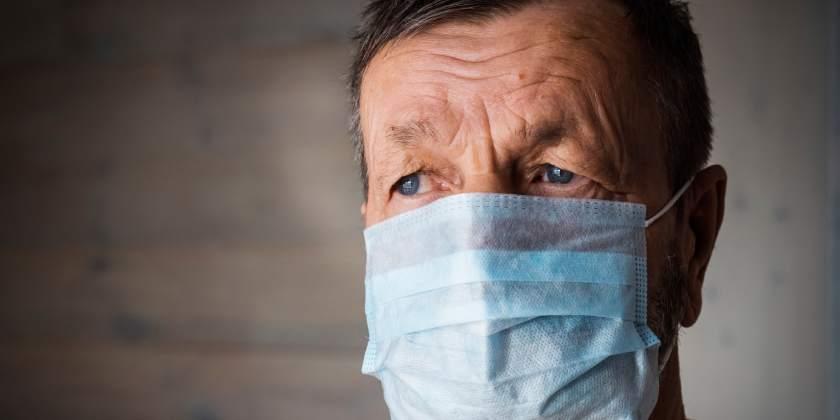¿Covid-19: son las medidas no farmacológicas la respuesta?.
Palabras clave:
Infecciones por Coronavirus, Prevención Primaria, prevención & control, Medicina Preventiva, Prevención de Enfermedades.Resumen
Con la diseminación mundial de virus SARS Cov-2 y sin la presencia de un fármaco específico para el tratamiento o profilaxis de la enfermedad. Solo quedan medidas tradicionales de salud pública, para prevenir que el virus se continúe esparciendo. Nuestro objetivo es reflexionar sobre estas medidas no farmacológicas, que ya están en marcha en todos los países. Acciones como el lavado frecuente de las manos, la desinfección reiterada de superficies han demostrado ser efectivas, en prevenir la extensión viral. Asimismo, medidas como el aislamiento, cuarentena, el distanciamiento social y la reducción de actividades productivas, excepto las estrictamente esenciales, han contribuido a contener el virus. Se esperaba una respuesta al problema, en el desarrollo de un fármaco o vacuna eficaz, pero a falta de esta la única solución y la más efectiva al momento son, estas medidas no farmacológicas de prevención.
Descargas
Citas
1. Zhu N, Zhang D, Wang W, Xingwang L, Bo Y, Jingdong S, et al. A Novel Coronavirus from Patients with Pneumonia in China, 2019. N Engl J Med 2020; 382(8): 727-733.
2. Chan JF, Yuan S, Kok KH, Kai Wang To K, Chu H, Yang J, et al. A familial cluster of pneumonia associated with the 2019 novel coronavirus indicating person-to-person transmission: a study of a family cluster. Lancet 2020; 395(10223): 514-523.
3. World Health Organization (WHO). Statement on the second meeting of the International Health Regulations (2005) Emergency Committee regarding the outbreak of novel coronavirus (2019-nCoV). [Internet]. Geneva: World Health Organization; 2020. [citado 02/06/2020]. Disponible en: https://www.who.int/news/item/30-01-2020-statement-on-the-second-meeting-of-the-international-health-regulations-(2005)-emergency-committee-regarding-the-outbreak-of-novel-coronavirus-(2019-ncov)
4. World Health Organization (WHO). Coronavirus disease 2019 (COVID-19) Situation Report–101. WHO. [Internet]. 2020. [citado 01/05/2020]. Disponible en: https://apps.who.int/iris/handle/10665/332054
5. Wu Z, McGoogan JM. Characteristics of and Important Lessons From the Coronavirus Disease 2019 (COVID-19) Outbreak in China: Summary of a Report of 72 314 Cases From the Chinese Center for Disease Control and Prevention. JAMA 2020; 323(13): 1239–1242.
6. Parry J. China coronavirus: cases surge as official admits human to human transmission. BMJ 2020; 368: m236.
7. Katz R, Vaught A, Simmens SJ. Local Decision Making for Implementing Social Distancing in Response to Outbreaks. Public Health Rep 2019; 134(2): 150-154.
8. Mesa Vieira C, Franco OH, Gómez Restrepo C, Abel T. COVID-19: The forgotten priorities of the pandemic. Maturitas 2020; 136: 38-41.
9. Chowdhury R, Heng K, Shawon MSR, et al. Dynamic interventions to control COVID-19 pandemic: a multivariate prediction modelling study comparing 16 worldwide countries. Eur J Epidemiol 2020; 35(5): 389-399.
10. Wilder-Smith A, Freedman DO. Isolation, quarantine, social distancing and community containment: pivotal role for old-style public health measures in the novel coronavirus (2019-nCoV) outbreak. J Travel Med 2020; 27(2): taaa020.
11. Nussbaumer-Streit B, Mayr V, Dobrescu AI, Chapman A, Persad E, Klerings I, et al. Quarantine alone or in combination with other public health measures to control COVID-19: a rapid review. Cochrane Database Syst Rev 2020; 4(4): CD013574.
12. Wilder-Smith A, Chiew CJ, Lee VJ. Can we contain the COVID-19 outbreak with the same measures as for SARS? Lancet Infect Dis 2020; 20(5): e102-e107.
13. Morawska L, Cao J. Airborne transmission of SARS-CoV-2: The world should face the reality. Environ Int 2020; 139: 105730.
14. Goldust M, Abdelmaksoud A, Navarini AA. Hand disinfection in the combat against Covid-19. J Eur Acad Dermatol Venereol 2020; 34(9): e454-e455.
15. Fathizadeh H, Maroufi P, Momen-Heravi M, Dao S, Kose S, Ganbarov G, et al. Protection and disinfection policies against SARS-CoV-2 (COVID-19). Infez Med 2020; 28(2): 185-191.
16. Kampf G, Todt D, Pfaender S, Steinmann E. Persistence of coronaviruses on inanimate surfaces and their inactivation with biocidal agents. J Hosp Infect 2020; 104(3): 246-251.
17. Sjödin H, Wilder-Smith A, Osman S, Farooq Z, Rocklöv J. Only strict quarantine measures can curb the coronavirus disease (COVID-19) outbreak in Italy, 2020. Euro Surveill 2020; 25(13): 2000280.
18. Gao WJ, Li LM. Advances on presymptomatic or asymptomatic carrier transmission of COVID-19. Zhonghua Liu Xing Bing Xue Za Zhi 2020; 41(4): 485-488.
19. Tang B, Xia F, Tang S, Luigi Bragazzi N, Li Q, Sun X, et al. The effectiveness of quarantine and isolation determine the trend of the COVID-19 epidemics in the final phase of the current outbreak in China. Int J Infect Dis 2020; 95: 288-293.
20. Liu X, Zhang S. COVID-19: Face masks and human-to-human transmission. Influenza Other Respir Viruses 2020; 14(4): 472-473.
21. Cheng VC, Wong SC, Chuang VW, Chun So SY, Kwan Chen JH, Sridhar S, et al. The role of community-wide wearing of face mask for control of coronavirus disease 2019 (COVID-19) epidemic due to SARS-CoV-2. J Infect 2020; 81(1): 107-114.
22. Mal PR, Suneel P, Shomeeta P. Social distancing: A non-pharmacological intervention for COVID-19. J Pak Med Assoc 2020; 70(Suppl 3)(5): S21-S24.
23. Lewnard JA, Lo NC. Scientific and ethical basis for social-distancing interventions against COVID-19. Lancet Infect Dis 2020; 20(6): 631-633.
24. Saadat S, Rawtani D, Hussain CM. Environmental perspective of COVID-19. Sci Total Environ 2020; 728: 138870.

Publicado
Cómo citar
Número
Sección
Licencia
Avisos de derechos de autor propuestos por Creative Commons
1. Política propuesta para revistas que ofrecen acceso abierto
Aquellos autores/as que tengan publicaciones con esta revista, aceptan los términos siguientes:- Los autores/as conservarán sus derechos de autor y garantizarán a la revista el derecho de primera publicación de su obra, el cuál estará simultáneamente sujeto a la Licencia de reconocimiento de Creative Commons que permite a terceros compartir la obra siempre que se indique su autor y su primera publicación esta revista.
- Los autores/as podrán adoptar otros acuerdos de licencia no exclusiva de distribución de la versión de la obra publicada (p. ej.: depositarla en un archivo telemático institucional o publicarla en un volumen monográfico) siempre que se indique la publicación inicial en esta revista.
- Se permite y recomienda a los autores/as difundir su obra a través de Internet (p. ej.: en archivos telemáticos institucionales o en su página web) antes y durante el proceso de envío, lo cual puede producir intercambios interesantes y aumentar las citas de la obra publicada. (Véase El efecto del acceso abierto).







